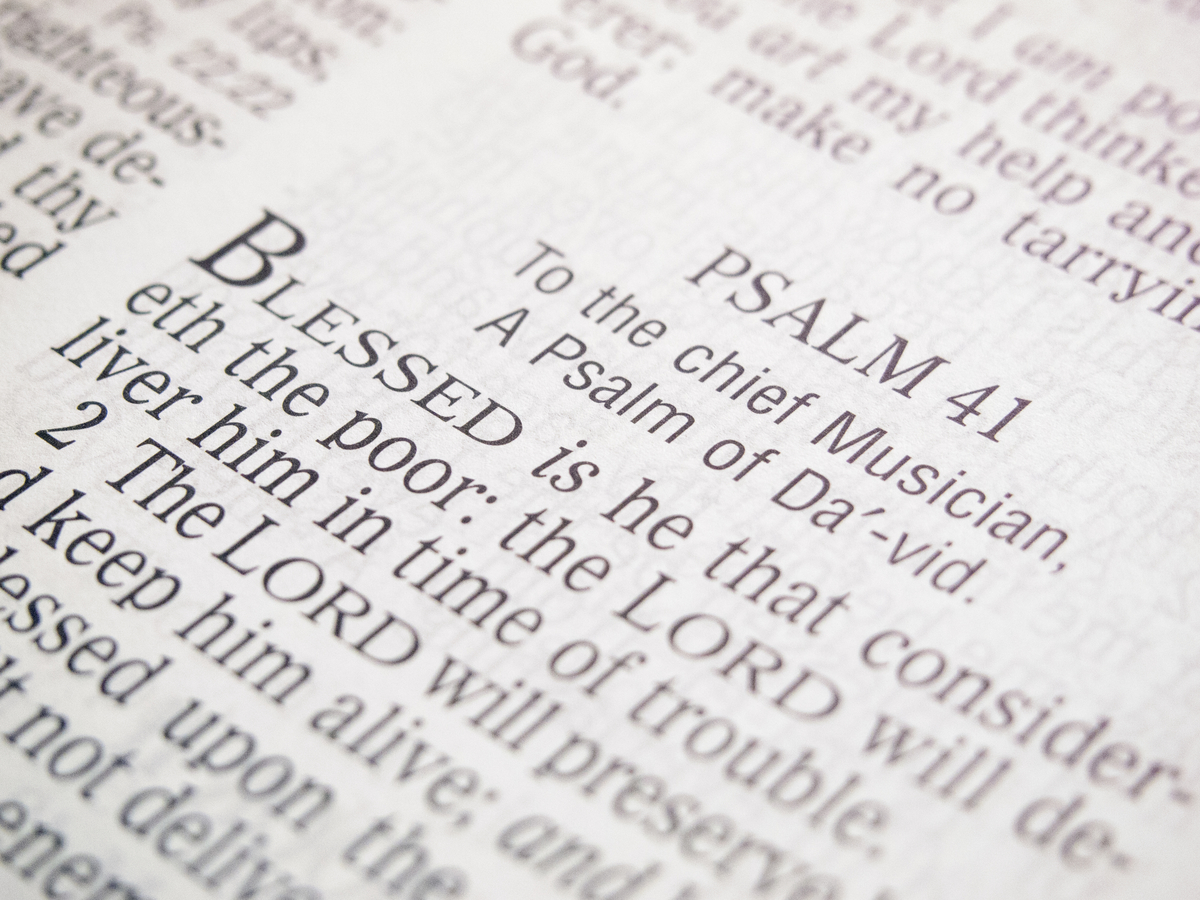Churches, why aren’t we singing the Psalms?
I’m not talking about songs loosely based on the Psalms, but rather songs that try to stick to the divinely inspired words, line by line.
Some people dismiss using the book of Psalms as a modern songbook because it’s found in the Old Testament.
But part of what makes the book such as treasure is that it’s forward-looking to Jesus. Most of the authors of the Psalms, including David, lived at least 1,000 years before Jesus, yet the book foretells Jesus’ life, death, resurrection and ascension.
In fact, Biblical scholars refer to certain Psalms as being messianic because they so clearly describe the coming Messiah.
And Jesus Himself said that the things written about Him in the Law of Moses, the Prophets and the Psalms had to be fulfilled.
So, when we’re singing the Psalms, we’re putting our focus on Jesus, and we’re reminded that God does what He says He’ll do.
We’re also heeding Paul’s exhortation in his letters to the churches in Ephesus and Colossae. He told them to sing psalms, hymns and spiritual songs.
Psalm-singing in services
As the New Testament shows us, the earliest believers sang the Psalms, but the practice didn’t stop with them. We know from historical documents that Christians continued to sing the poetic and prophetic words.
A letter written by a European nun named Egeria contains a description of what she saw when she attended a Christian service in Jerusalem around A.D. 400.
In the service, as the letter explains in detail, church leaders sang a total of four Psalms, each one followed by a prayer. One hymn was also sung by the people in the church.
The start of metrical psalmody
Centuries later, at the time of the Protestant Reformation, there was a renewed emphasis on and a new approach to Psalm-singing.
John Calvin wanted to encourage congregational singing, and he believed making Psalms metrical — i.e., placing them in poetic meter — would help.
In 1539, Calvin and poet Clement Marot produced the first metrical psalter, containing nearly 20 Psalms for singing. Calvin oversaw the completion of this French translation, utilizing the skill of poets and composers, until finally in 1562, all 150 Psalms were published in the Genevan Psalter.
Other psalters appeared in Europe throughout the 1500s.
When the Pilgrims and the Puritans came to the New World, each group brought its own psalter. The Puritans soon after wrote another version, and in 1640 it became the first book published in America.
Clearly, during the 16th and 17th centuries, Christians understood the importance of Psalm-singing. Hymns started to crowd out the Psalms during the 18th and 19th centuries. Then, with the introduction of church pop music in the 20th and 21st centuries, Psalms by and large lost their place in church services.
Today, a handful of denominations still sing the Psalms, using modern-day psalters.
For example, The Book of Psalms for Worship, published in 2009, is a metrical psalter that contains all 150 Psalms arranged for four vocal parts.
Churches could use that psalter, or another resource closely paraphrasing Scripture, to readily get back to singing the Psalms.
Copyright 2024

